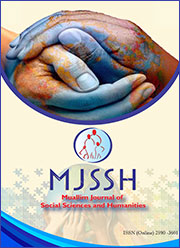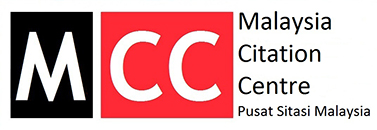The revered Perumale in Tiruppukal: a case study
Keywords:
Tiruppukal, Perumale, Arunagirinathar, Murugan, Vaishnavism, Saivism, Vishnu, SivaAbstract
Tiruppukal is a devotional poetry composed by poet-saint Arunagirinathar to promote glory of Lord Murugan, the ancient god of Tamils. A preliminary literature review of the text revealed the name Perumale (Perumal), synonymous with names Tirumal and Vishnu among Tamil Vaishanavites, is more often quoted in comparison to Murugan. Thus, this article tries to analyse Arunagirinathar’s intend in promoting name Perumale. This article approaches the subject using qualitative research incorporating library-based and descriptive methods to analyse and evaluate Arunagirinathar’s such intend. Findings revealed that Perumale is a conceptual term means “Great One” or “Lord of Lords” even though has connotation to deity Perumal. The name Perumale is used in social and linguistic contexts to depict Murugan as the Great God of the Tamils. Arunagirinathar also portrayed Murugan’s attributes and his three forms to alleviate Him from the Tamil folklore deity to a Great God of the South India. Arunagirinathar also used Perumale to syncretize Murugan and Skanda to bridge a cultural and religious unity between the North-South (India) while stamping Him with pan-Indian identity. Further, Lord Murugan’s bond of kinship with various divinities and deities of Hindu pantheon in context with name Perumale portrayed Him as Supreme Being in par excellence with Siva and Vishnu as well as illustrates sense of oneness, coexistence and harmonious interaction which binds the various Hindu divides. Thus, Arunagirinathar by means of the Perumale has portrayed Murugan as a pan-Hindu god who transcends religious and philosophical barriers in Hindu pantheon.
References
Alphonsa, P. (2017). Tinai as an ecocritical concept. International Journal of English Language, Literature in Humanities (IJELLH), 5(8), 887-898. Retrieved December 20, 2023, from https://www.academia.edu/34488006.
Ambiga, V. (1998). The radiant or one with fair complexion. First International Conference/Seminar on Skanda-Murukan. Chennai: The Institute of Asian Studies.
Ananthanarayanan, V. S. (2018). Arunagirinathar ayvuk kalanciyam [Encyclopaedia od study on Arunagirinathar. Retrieved August 5, 2022, from kaumaram.com. https://kaumaram.com/arasu/anantha_narayanan_01_u.html.
Balambal, V. (2001). Facets of murukan. Second International Conference on Skanda-Murukan, 24-28 April. Mauritius. Retrieved March 16, 2023, from https://w.ww.Murugan.org
Balasubramanian, C. (1985). Murugan kaatchi [Vision of Murugan]. Chennai, India: Narumalar Pattipagam.
Chengalvaraya Pillai. (2019). Arunagirinathar aruliya tiruppukaḻ, mūlamum uraiyum (3 vols.) [Arunagirinathar’s holy praises, source, and commentary]. Chennai, India: Saran Books.
Clothey, Fred W. (1978). The many faces of murukan-The history and meaning of a south Indian god. Hague, Netherlands: Mouton Publishers.
Coomaraswamy, A. K. (1918). The dance of siva: Fourteen indian essays (2nd ed.). New York, USA.: The Sunrise Turn. Retrieved January 26, 2024, from https://archive.org/details/danceofsivafourt00coomiala/page/n7/mode/2up.
Devapoopathy, N. (1994). Love in sanskrit and tamil literature: A Study of characters and nature, 200 B.C.-A.D. 500. New Delhi, India: Motilal Banarsidass Publication.
Dutt, M. N. (1908). The garuda puranam. Calcutta, India: Society for the Resuscitation of Indian Literature. Retrieved October 5, 2023, from https://archive.org/details/garudapuranam00duttgoog/page/36/mode/2up?view=theater
Gietz, K. (1992). Pic and Puranic Bibliography (Up to 1985) Annoted and with Indexes: Part I: A - R, Part II: S - Z, Indexes. Verlag: E. Otto Herskowitz.
Gnanapoongothai, M. (2007). Saiva sithanatha thiran [The study of Saiva Siddhanta]. Madurai, India: Namasivaya Pattipakam.
Gonda, J. (2018). Epithets in the rgveda (Disputationes rheno-trajectinae, 4). Hague, Netherlands: Walter de Gruyter.
Heras, H. (1947). The Dravidian tribes of Northern India. Proceedinds of the Indian History Congress, 10, 75-84. Retrieved October 2, 2023 from https://www.jstor.org/stable/44137107.
Jagannathan, K. V. (1968). Perum peyar Murugan [The great name Murugan]. Chennai, India: Amutha Nilaiyam Ltd.
Kartikeyan, N. (2017). The esoteric kandar anubhuti of saint arunagirinathar. Retrieved October 5, 2023, from https://kaumaram.com.
Kathiravel Pillai, C. (1998). Tamil sollagarathi (Pakuthi, 3) [Tamil vocalbury, Part 3]. Chennai, India: C.W. Kathiravel Pillai.
Kathirraiver Pillai, N. (1981). Tamilmoli akarathi [Tamil dictionary]. New Delhi, India: Asian Educational Services.
Kesikan, P. (2002). Paripatal moolamum uraiyum [Paripatal-Source and commentary]. Chennai, India: Paari Nilayam.
Kumaraguruparar Swamigal. (1943). Tiruvarur nanmanimalai [Praises of thiagaraja Peruman]. Dharmapuram, India: Gnanasambantham Pattipagam.
Kumaraguruparar Swamigal. (1997). Kanthar kalivenba [Poems of kanda's praise]. Tirupananthal, India: Kasittirumadam.
Leeming, D. (2001). A dictionary of asian mythology. Oxford, United Kingdom: Oxford University Press.
Mahadevan, I. (1998). Murukan in the indus script. First International Conference/Seminar on Skanda-Murukan, December 28-30. Chennai, India: Institute of Asian Studies. Retrieved March 10, 2023, from https://www.Murugan.org.
Mangala Murugesan. (2003). The concept of mystical oneness: A study of arunagirinathar’s kandar anubhuti. Third Murukan Conference. Kuala Lumpur, Malaysia: Department of Indian Studies, University of Malaya.
Marshall, J. (. (1931). Mohenjo-daro and the Indus civilization (Vol. 1). Archaeological Survey of India. New Delhi, India: Arthur Probsthain. Retrieved February 12, 2023, from http://indianculture.gov.in/mohenjo-daro-and-indus-civilization.
Nadarajan, S. (1978). Murugan darisanam [Sight of Murugan]. Chennai, India: Pratibha Prasuram.
Nagaraja Rao. (1960). Introduction to vedanta (2nd ed.). Bombay, India: Bharatiya Vidya Bhavan.
Nakkirar. (1960). Tirumurukarruppatai (ed.) [Guide to lord Murugan]. Tinnevelly, India: The South India Saiva Siddhanta Works Publishing Society.
Natchathiraivani, P. (2022). Sanga kala ilakkiyangkalil vainava samaya vazhippatu kotpadukal [Principles of vaishnavism in sangam literature]. International Reserach Journal of Tamil, 4(13), 126-136. https://doi:10.34256/Irjt224s1318.
Nilakanta Sastri . (1958). A history of south India from prehistoric times to the fall of vijayanagar. Oxford, England: Oxford University Press.
Oppert, G. S. (1893). On the original inhabitants of bharatavarsa or india. Leipzig, Germany: Cornell University. Retrieved October 2, 2023, from https://archive.org/details/cu31924024065470/page/n11/mode/2up.
Parthasarathy, A. (2001). Vedanta treatise. Mumbai, India: Vedanta Life Institute.
Perumalaiyangar, P. (2009). Asdha pirabandham, Mulamum Uraiyum [Voice of god-source and commentary]. Chennai, Indioa: Uma Pathippagam.
Rajantheran, M., & Viknarasah, R. (2014). Lord Murugan in Vedas. Journal of Indian Culture and Civilization, 1, 1-7. Retrieved April 4, 2024, from http://eprints.um.edu.my/id/eprint/14467.
Roshen, D. (2014). Hinduism: An alphabetical guide. London, England: Penguin Books.
Sadasivan, K. (2003). From tribalism to culturalism: A study of the transformation of velan to murukan in the tamil tradition. Third Murukan Conference. Kuala Lumpur. Retrieved March 12, 2023, from https://www.Murugan.org.
Seeta Letchumy, R. (2012). Tiruvisaippa unarttum Murugan peruman pattriya seytikal [Messages about Lord Murugan in tiruvisaippa]. In Pal Nookku Paarvaiyil Murugan Tatthuvam [Murugan worship and ethics of life in Philosophy of Murugan based on various perspectives], (pp. 145-156). Kuala Lumpur, Malaysia: Department of Indian Studies, University of Malaya.
Seshadari, K. (. (1996). Paripatal (English Translation). Chennai, India: Institute of Asian Studies.
Shanmuganar, S. (1990). Tamilnul tokuppuk kalanciyam [Repository of tamil books]. Chennai, India: Manivasagar Pattipagam.
Shuddhananda Bharati. (1965). Light on Saiva Siddhanta, Lecture 8. In T. A. University, Collected lectures on Saiva Siddhanta, 1946-1954 (pp. 1-45). Annamalainagar, India: The Annamalai University.
Sivagami, P. (2003). Devaraya Swamigal’s Inspiring Divine Contributions Towards Murukanism. The Third Murukan Conference. Kuala Lumpur, Malaysia: University of Malaya. Retrieved December 31, 2023, from https://Murugan.org/
Sivananda Jothi, G. (2012). Murugan valipaadum vaalkai neriyum. In Palnookku paarvaiyil Murugan thattuvam [Murugan worship and ethics of life in Philosophy of Murugan based on various perspectives] (pp.184-191). Kuala Lumpur, Malaysia: Department of Indian Studies, University of Malaya.
Somasuntharam, M. (1988). Chitthar ilakkiam (Pakuti 1) [Literature of siddhars, Part 1]. Annamalainagar: Annamalai University.
Surendran, V. (2021, February 5). Tamil kadavul Muruganin irainerik kolkaigal [The theory of tamil god Murugan]. Indian Journal of Tamil, 2(1), 19-23. http://doi:10.34256/ijot2113.
Syambu, P. (2003). Significance of kaumara icons. Third Murukan Conference, November 2-5. Kuala Lumpur. Retrieved March 12, 2023, from https://www.Murugan.org.
Tieken, H. (2003). Old tamil cankam literature and the so-called cankam period. The Indian Economic & Social History Review, 40(3), 247-278. https://doi.org/10.1177/001946460304000301.
Tolkappiar. (2001). Tolkappiam [The ancient poem]. Retrieved from Project Madurai: https://www.projectmadurai.org/
University of Madras. (1982). Tamil lexicon (vol. 1-7). Madras: University of Madras.
Vaanamaamalai, N. (2019). Tamizhar panpadum thathuvamum [The tamils’ culture and philosophy]. Chennai, India: Bharathi Puthakalayam.
Zvelebil, K. (1973). The smile of Murugan on tamil literature of South India. Leiden: E.J.Brill.
Zvelebil, K. (1991). Tamil traditions on Subrahmanya-Murugan. Madras: Institute of Asian Studies.
Published
 Abstract Display: 0
Abstract Display: 0  PDF Downloads: 0
PDF Downloads: 0 Issue
Section

This work is licensed under a Creative Commons Attribution-NonCommercial 4.0 International License.














 This work is licensed under a
This work is licensed under a